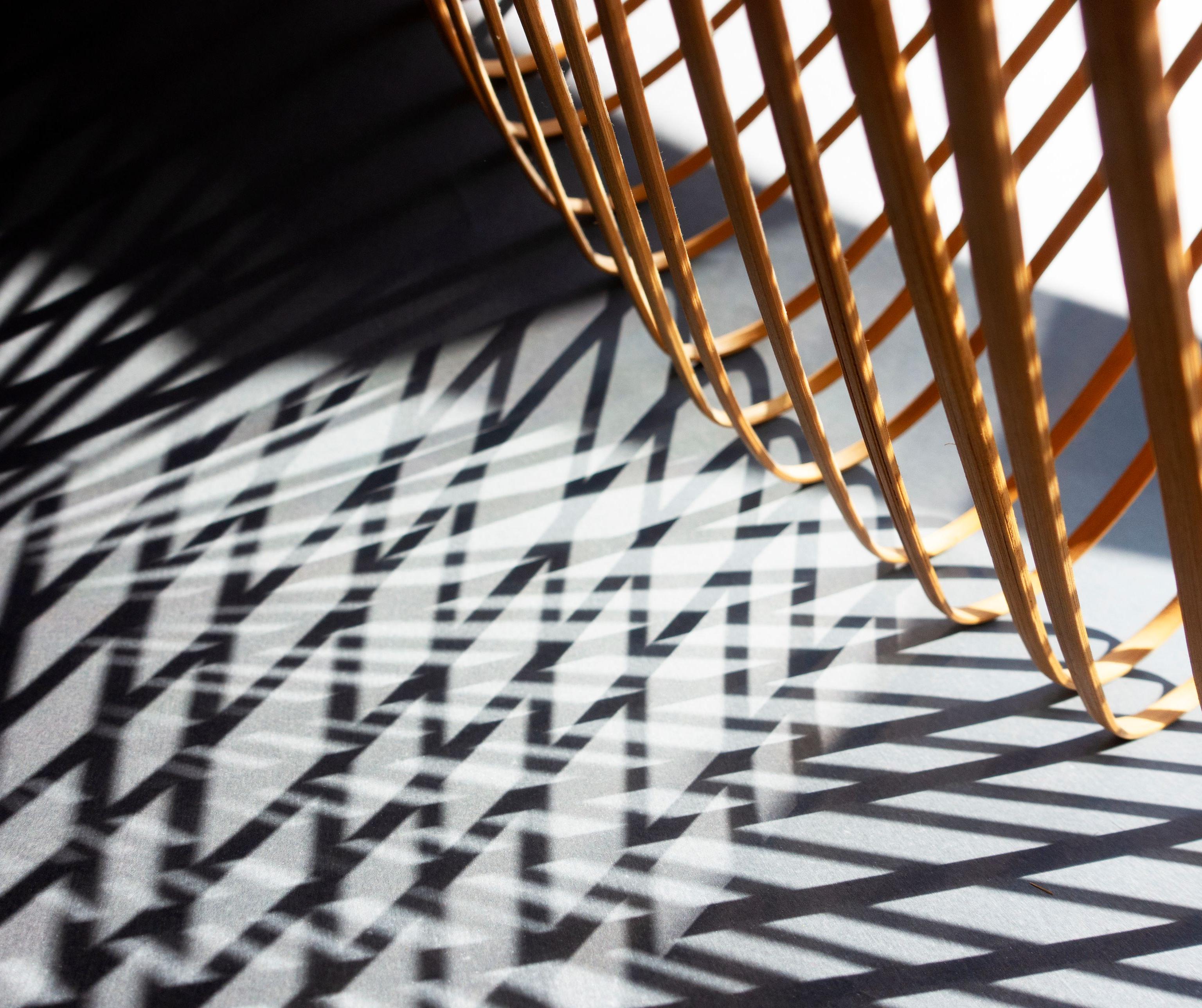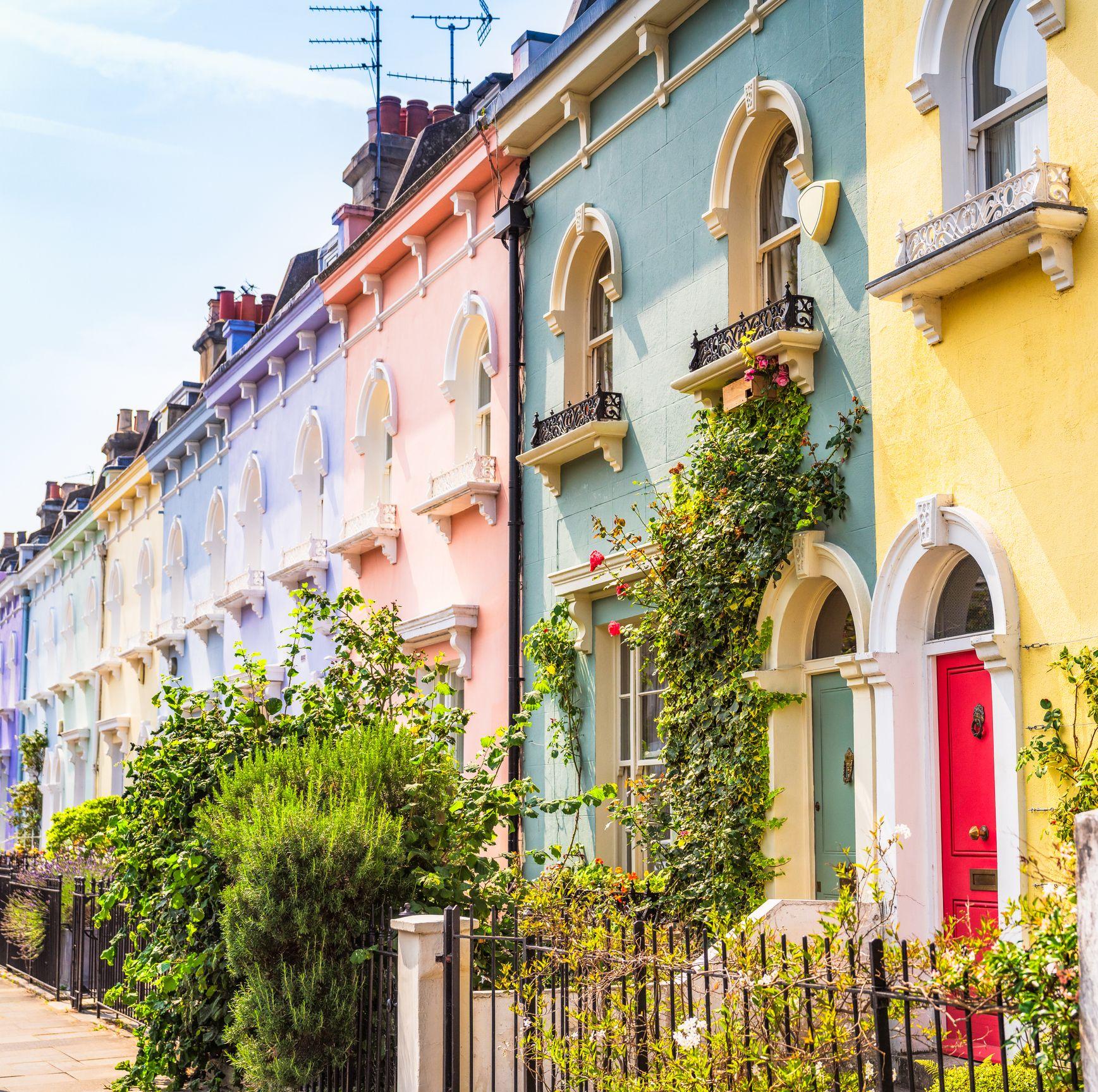
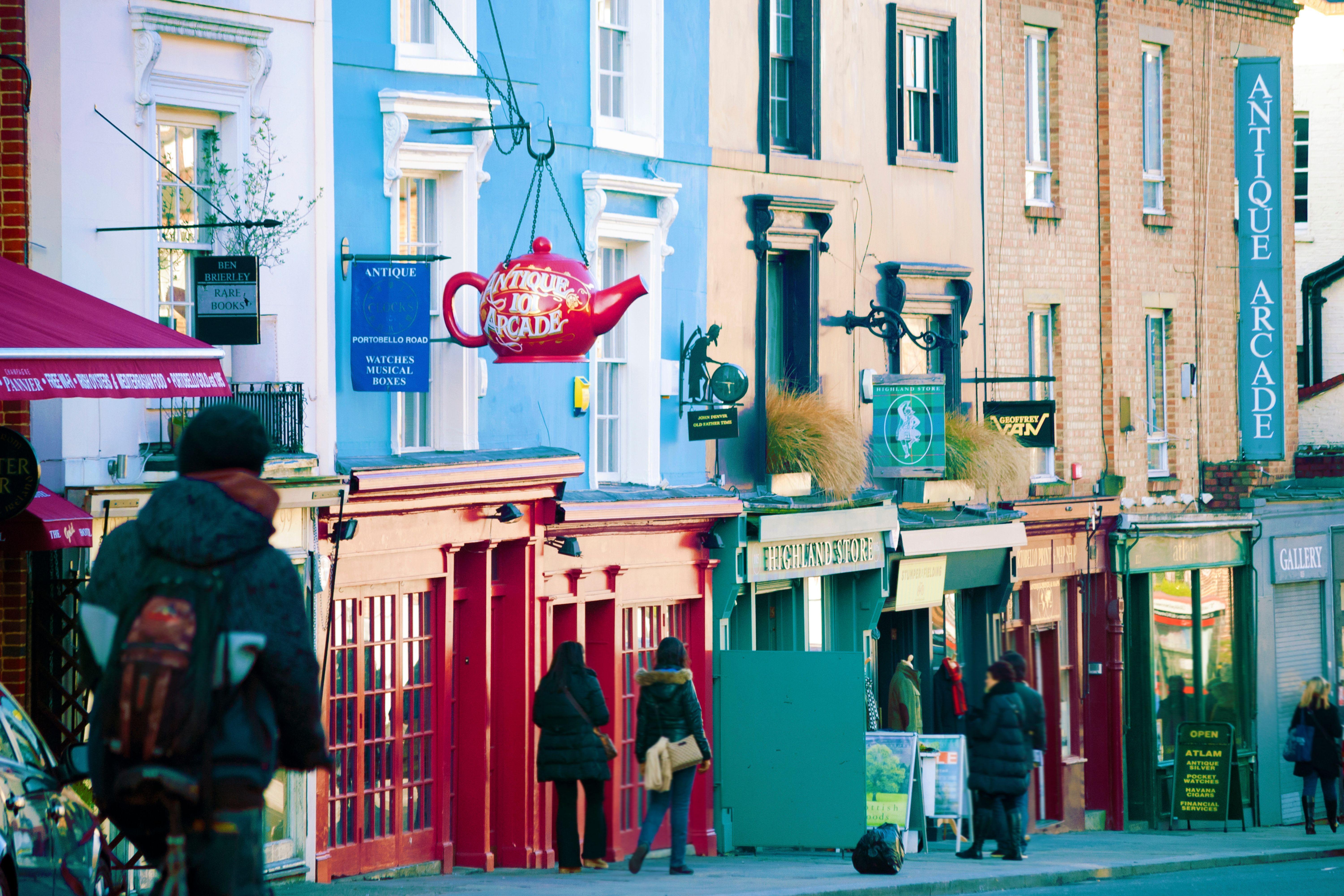
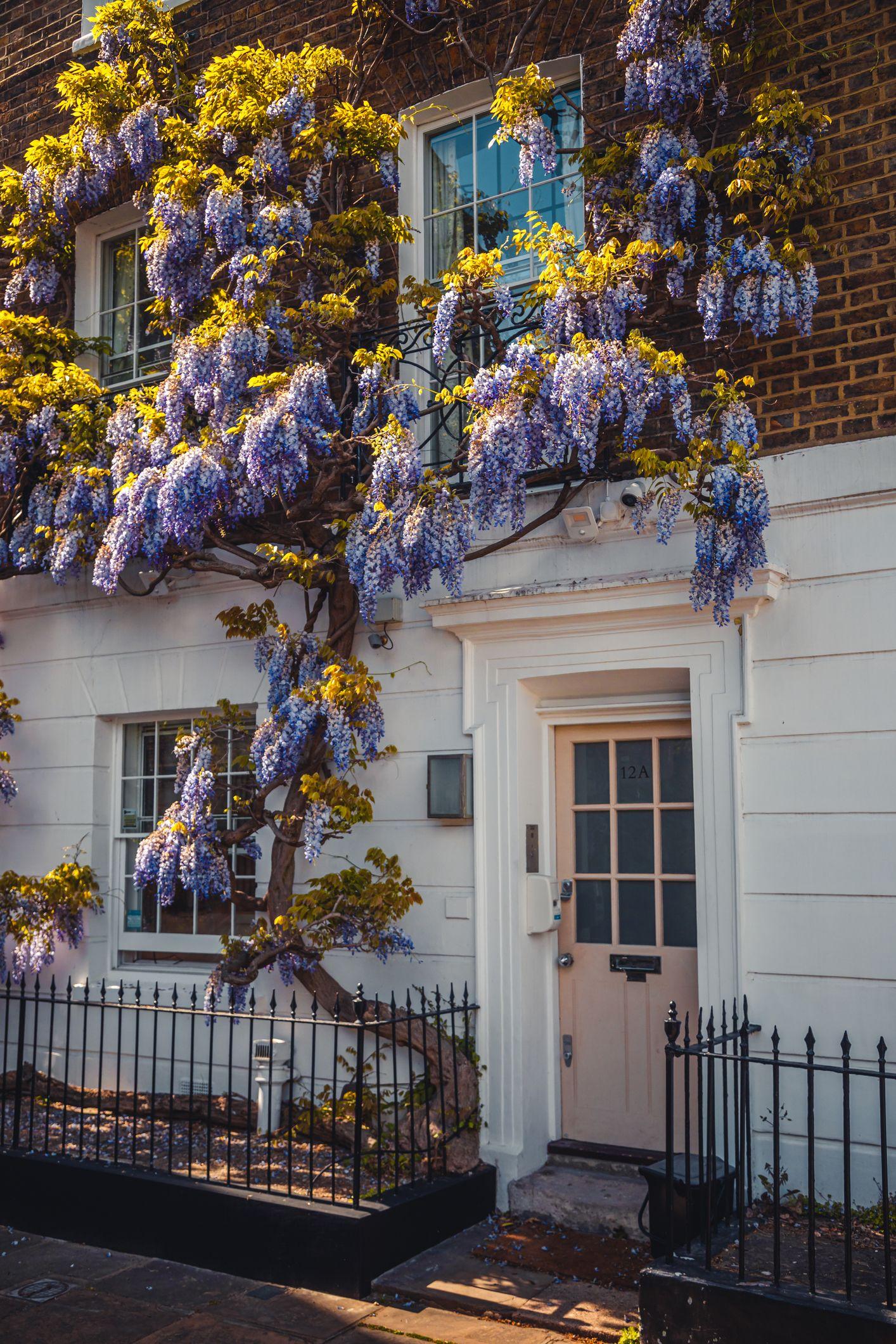
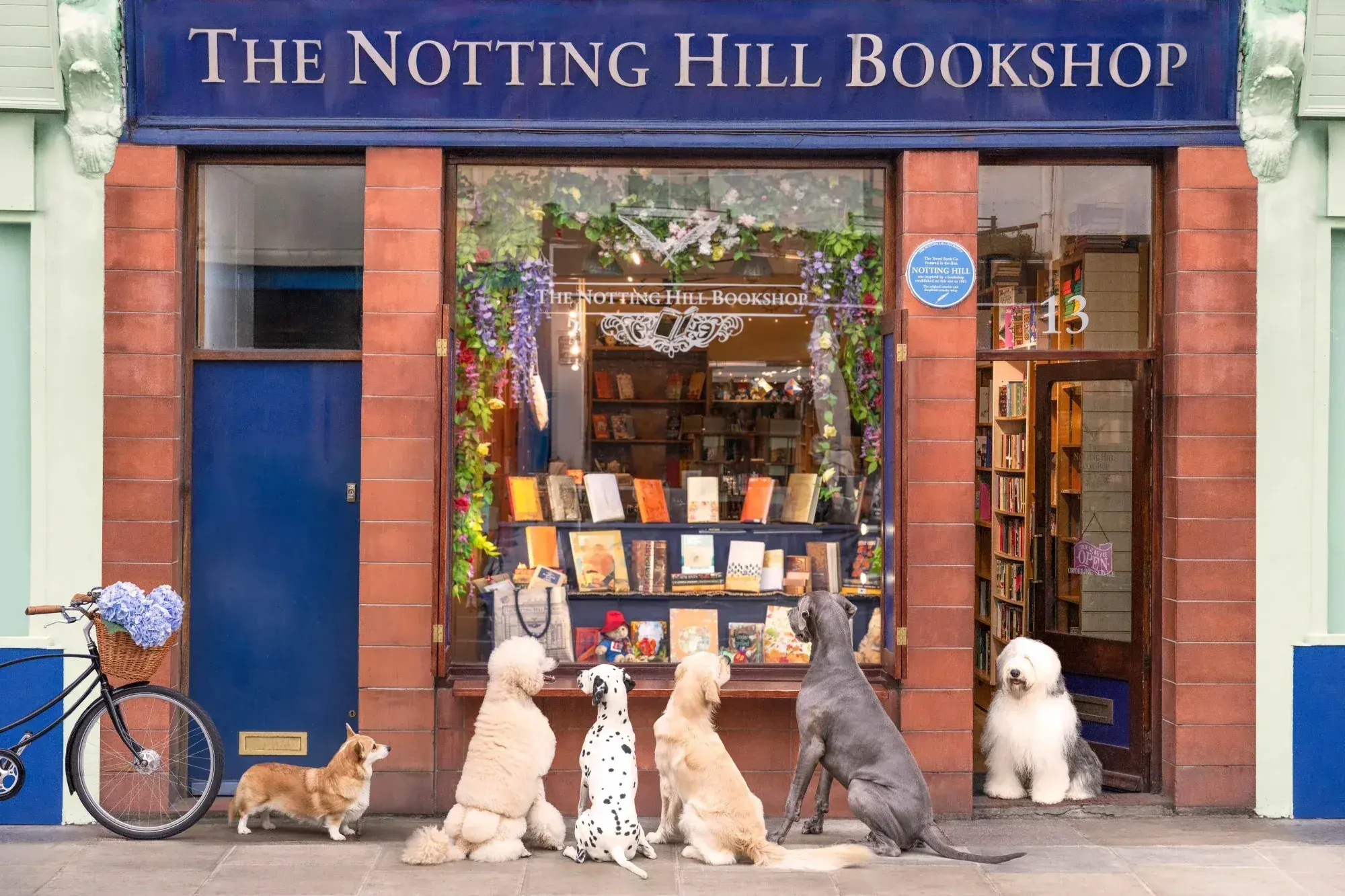

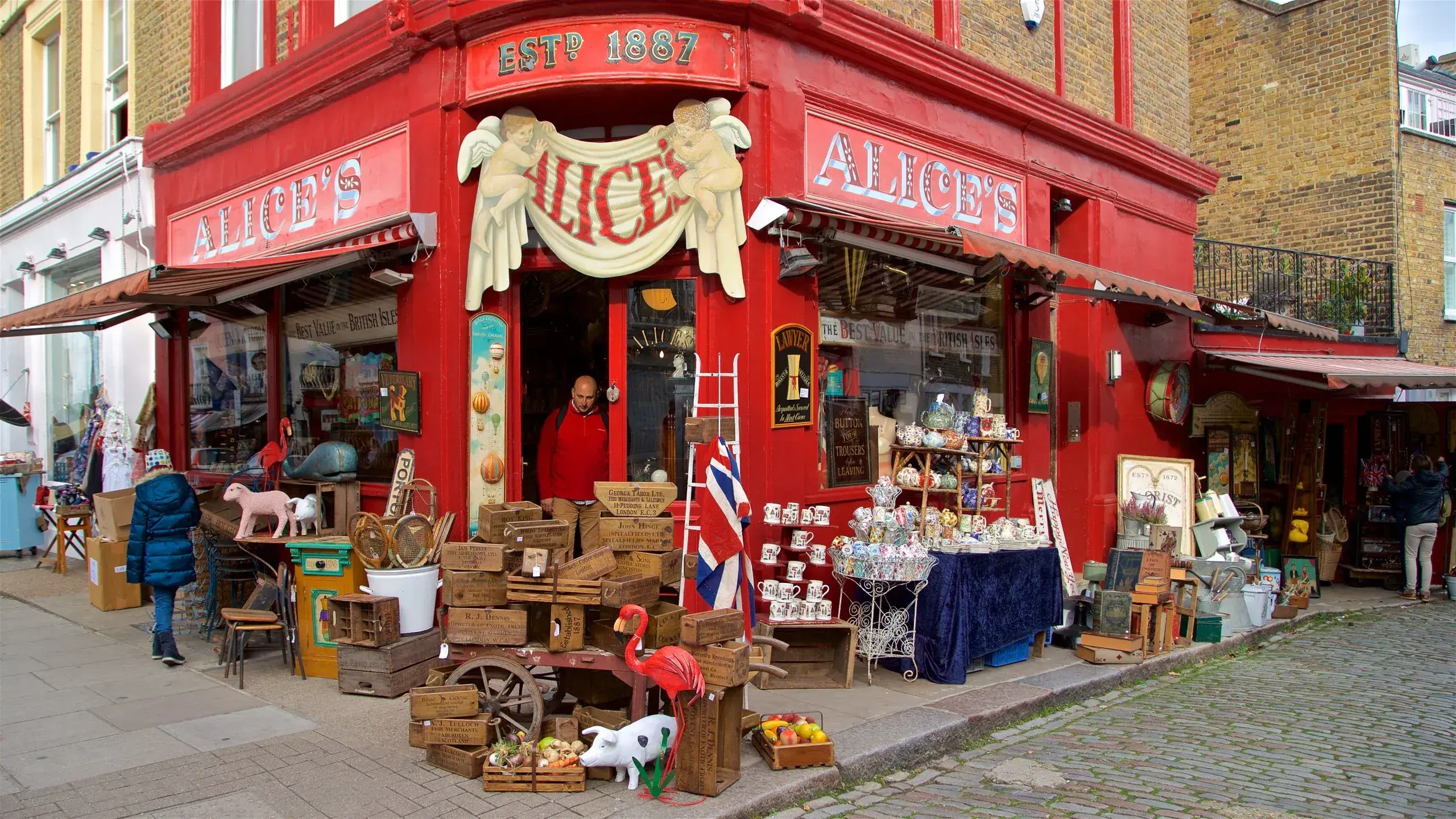
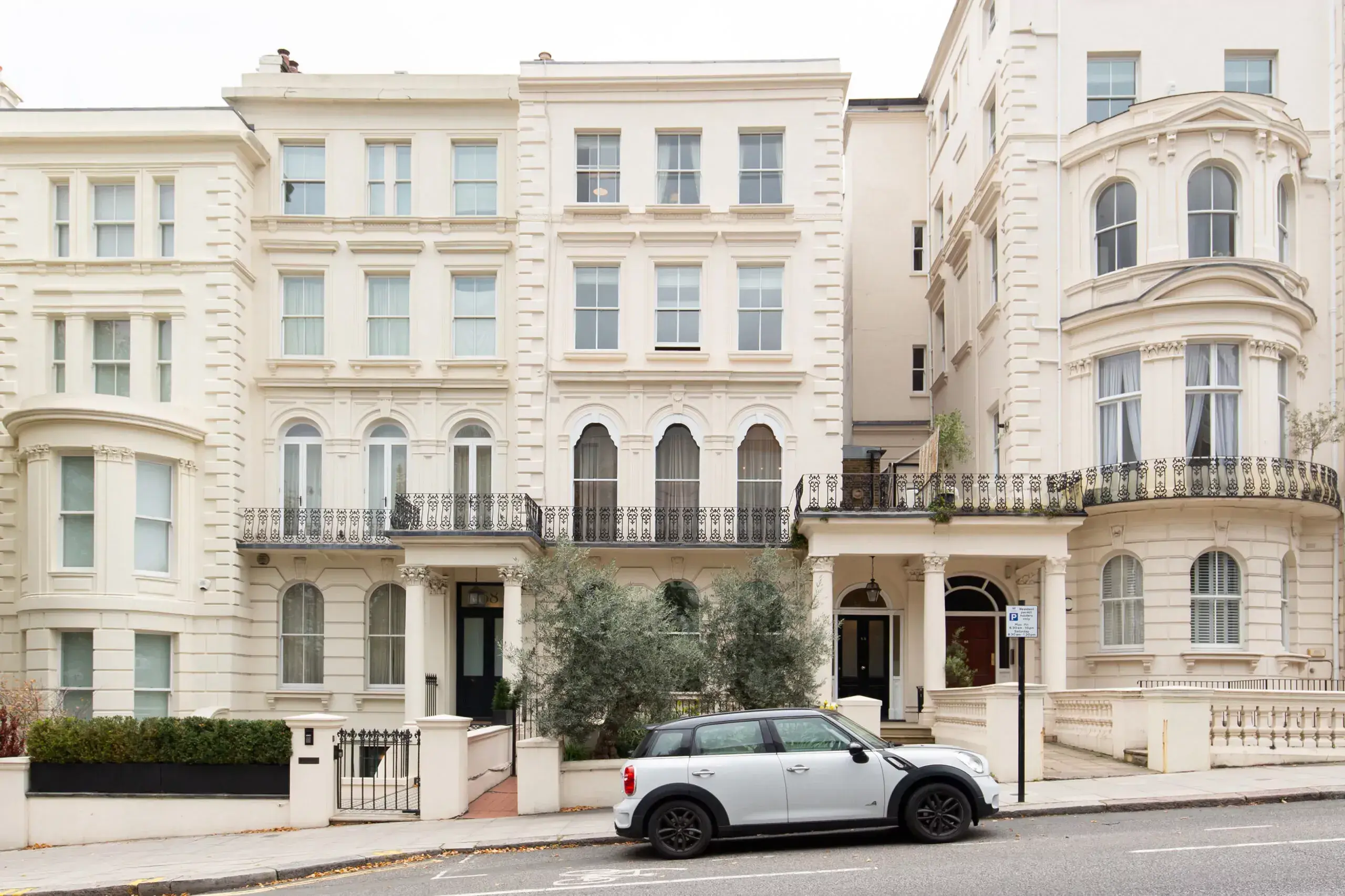


Notting Hill Area Guide
Between the Lines of W11
A classic neighbourhood, perfectly cast for modern life.
There’s a reason Notting Hill refuses to fall out of fashion. Yes, there are the postcard clichés - the pastel façades, the market mayhem, the hope of a Hugh Grant sighting - but to reduce W11 to rom-com tropes would be to miss the deeper layers of this West London region. Beneath the sugar-coated exteriors is a neighborhood with street-cred and a quietly subversive streak. Artists, eccentrics, entrepreneurs, and A-listers have all passed through, leaving behind an eclecticism you can feel in the fabric of each street. This is a London that’s lived in, not staged. Where antique hunting is a contact sport, the street food rivals the fine dining, and your best night out could start in a pub and end under a disco ball in a basement club that’s barely marked from the street. There’s history here - radical, royal, and rock'n'roll, but it doesn’t posture. It hums under the surface, felt more than flaunted. So whether you're here for a flat white and a mood board moment, a velvet cinema seat with cocktail service, or just a very good burger that might sell out if you dawdle, consider this your invitation to explore Notting Hill.

The It List
To Market, To Market
A market that needs little to no introduction, Portobello Market is known for being equal parts treasure hunt and anthropology fieldwork. When ambling around, expect to dodge tourists from every direction, haggle over silver and Wedgwood, and suddenly find yourself clutching a 1970s Rolling Stones tee like it’s a family heirloom. The street food is delicious and could potentially score a Michelin star if it wasn't served from under a tent. Come during the week if you prefer a light browse. But if you want to feel the market at its loudest, quirkiest, most unfiltered, Saturday’s the show.
Electric Feels
Established in 1911, Electric Cinema is one of the UK’s oldest working picture houses - and easily among its most decadent. The Edwardian Baroque façade sets the tone, but inside, it's pure velvet-trimmed indulgence. Think cashmere blankets, cocktail service, and cosy leather upholstery. The front row is fitted with velvet beds - yes, beds - and the rest of the 98 wide leather armchairs are punctuated with footstools, because popcorn and pick ‘n mix tastes better when your legs are elevated. Operated by Soho House, it’s less cinema, more cinematic experience, one that swiftly recalibrates your expectations of movie-going. Whether it’s arthouse or blockbuster on the bill, the real star here is the setting.
Art History
Tucked beneath the street, past a blink-and-you’ll-miss-it entrance, this basement venue doesn’t try too hard, which is exactly why its maintained that old-school-cool charm. The Notting Hill Arts Club is where Amy Winehouse once sang before the tabloids got her, where Lily Allen found her footing, and where Mark Ronson made the decks sweat. It’s the kind of hall where talent starts out loud and sincere. You don’t come here for perfection - you come for the pulse, the energy hit. And while the drinks may have changed since the early 2000s, the spirit of discovery is still alive and humming under the neon.
Garden Variety
Holland Park is what happens when a green space is given full artistic license. One moment you’re meandering through a Kyoto-style garden, all koi ponds and cascading waterfalls - a pocket of zen seemingly airlifted from Japan. The next, you’re skirting past tennis courts, a manicured Dutch flower garden, and even a life-sized chessboard where the drama of the game is matched only by the volume of its players. Come summer, the park reaches its crescendo with Opera Holland Park—arias floating into the dusk as the lawn becomes a theatre. It’s less a leisurely stroll, more a series of scene changes.
Show House
The Coronet Theatre feels like the kind of place where you might wander into the wrong performance and stay, spellbound, until the final bow. Faded grandeur greets at the door - part crumbling hotel lobby, part candlelit séance, with an atmosphere thick with possibility. The programming doesn’t aim to please so much as provoke. You take your seat unsure of what’s to come, and leave arguing about it—with someone you love, or perhaps someone you don’t. Either way, it sticks. A temple of offbeat brilliance, The Coronet rewards those who embrace the unexpected, and if you’re lucky, you’ll catch a show that lingers long after the tube ride home.
Book Keep
Yes, it’s that bookshop. But don’t mistake it for a mere movie-magic pit stop. The Notting Hill Bookshop. is genuinely cosy - cramped in all the right ways, with shelves that feel well-loved rather than just well-styled. The fiction section leans ever so slightly, a subtle testament to the books most often pulled, paged through, and passed along. And when your inner Julia Roberts has had her moment, there’s a tiny coffee shop just next door, where Ashley serves flat whites strong enough to cut through any London fog. Walk in for the movie moment, but linger for the real one you make yourself.
Wall of Change
A rotating canvas for West London's artistic circles, the Portobello Wall Public Art Project is where murals meet meaning and where meaning meets muse, even if it's brief. What started as a community project has quietly become one of the city's most unexpected outdoor galleries. No ticket, no pretense, just art - smack in the middle of your errand run and stopping you in your tracks most of the time. Tucked between Ladbroke Grove and Kensal Road, the wall’s ever-changing face features both emerging and established artists, many using the space to speak directly to the neighbourhood - culturally, politically, poignantly. It’s a reminder that London still makes space for public expression without the algorithms. Blink and it changes, but the impression stays with you.
Cultural Enlightenment
Once a church, transformed in the 1970s into a sanctuary of sorts - only the sermons are jazz riffs, spoken word poetry, and the occasional steel drum echoing through the halls. The Tabernacle is Notting Hill’s beating cultural heart and sits adjacent to Powis Square. It’s a place where artists, kids, dancers and old-school West London locals actually share space. You might pass a yoga class on your way to a gallery show, or stumble into a rehearsal for a fringe play in the same room where someone’s aunt is leading a cooking workshop. It’s wonderfully worn-in, with arched windows that let in just enough light to remind you that something sacred still happens here.
How to Get There
Notting Hill may feel like a self-contained pocket of charm, but it’s remarkably well connected to the rest of London. With multiple Underground stations - Notting Hill Gate, Ladbroke Grove, and Holland Park - linking you swiftly to the Central, Circle, and District lines, the city’s core is never more than a few stops away.
Notting Hill Gate
Central Line, District Line, Circle Line
Holland Park
Circle Line & Hammersmith & City Line
Latimer Road
Central Line
Ladbroke Grove
Circle Line & Hammersmith & City Line
Westbourne Park
Circle Line & Hammersmith & City Line
Royal Oak
Circle Line & Hammersmith & City Line
Bayswater
Circle Line & District Line
Queensway
Central Line
Book It
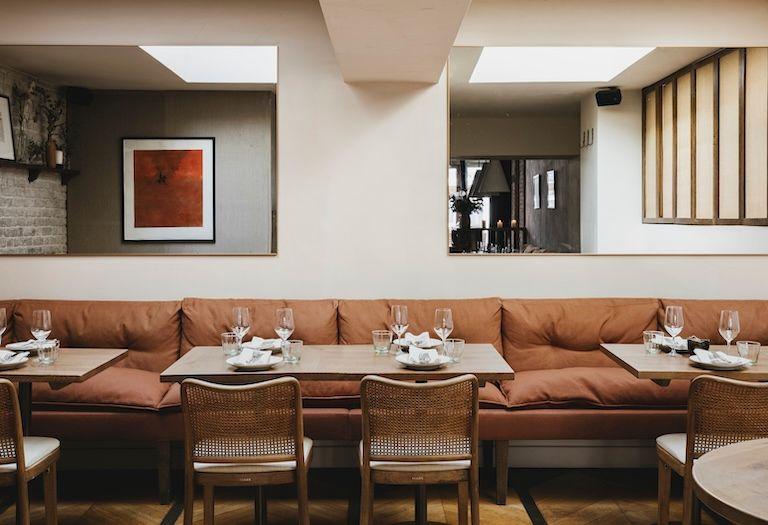
Dove
Jackson Boxer’s newest venture, Dove, is already a cult classic in the making. If you’re chasing the now-iconic burger, get there early - once they’re gone, they’re gone. The interiors exude an effortless, dreamy vibe - soft, natural hues and earthenware details set the tone for the simple yet profound plates that follow. And, yes, the Dove burger is certainly a thing of beauty, but don’t let tunnel vision blind you. The Fried Potato Pizzette with bonito, burrata, and mortadella is a unique must-try, while the whipped fava with cucumbers and salsa verde is the kind of sleeper hit that sneaks up on you. Duck fat fries are unapologetically rich, and the wood-fired chicken, bathed in Café de Paris butter and wild garlic is a masterclass in excess. It’s all deceptively laid-back, but every detail lands.
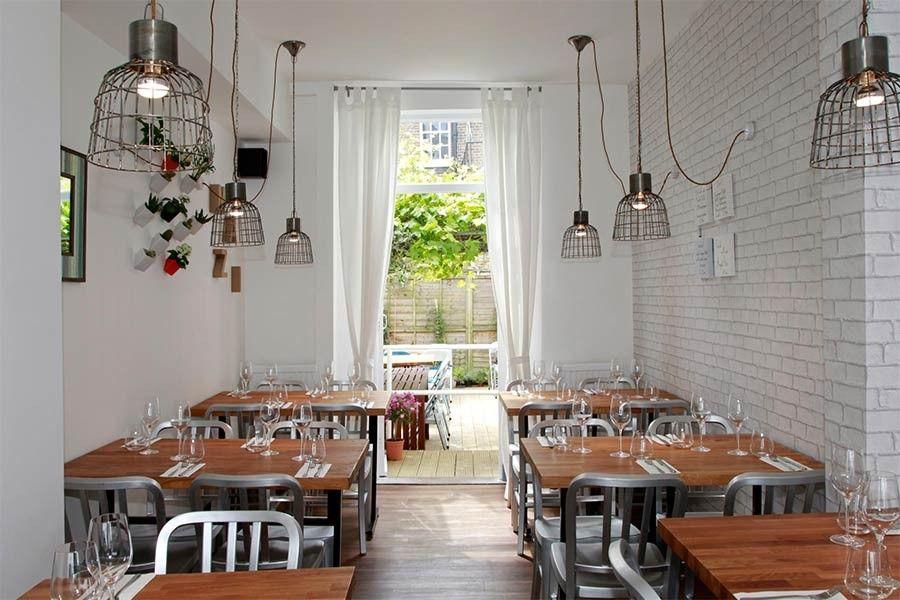
Mazi
Found among the pastel row houses of Hillgate Village, where roses climb the candy-colored walls and selfie-takers are spotted in the wild, lies Mazi, a modern Greek eatery with soul and style. The name means “together”, and it shows in the share-everything menu and warm, intimate space. Start with one (or several) of their signature jars - small, genius bites that pack a delicious punch. The grilled octopus with fava and burnt onion broth is smoky, tender and not without a bit of drama. The black truffle chicken with wild mushrooms and hunkar begendi is one of those dishes you’ll be thinking about and crave days later. Sister spot Suzi Tros is just next door, in case you need an encore and are lucky enough to snag a table.

Core
A quietly extraordinary meal that lingers long after the final bite. Core is refined, precise, and deeply personal - earning chef Clare Smyth the distinction as the first British female chef to hold three Michelin stars solo. Signature dishes like Potato and Roe or Lamb Carrot are understated icons, delivered with seamless service and thoughtful calm. Before or after, slip into Whiskey & Seaweed, the adjoining bar, where sea-swept cocktails and rare spirits echo the elegance next door. This is dining as it should be - unrushed and unforgettable.
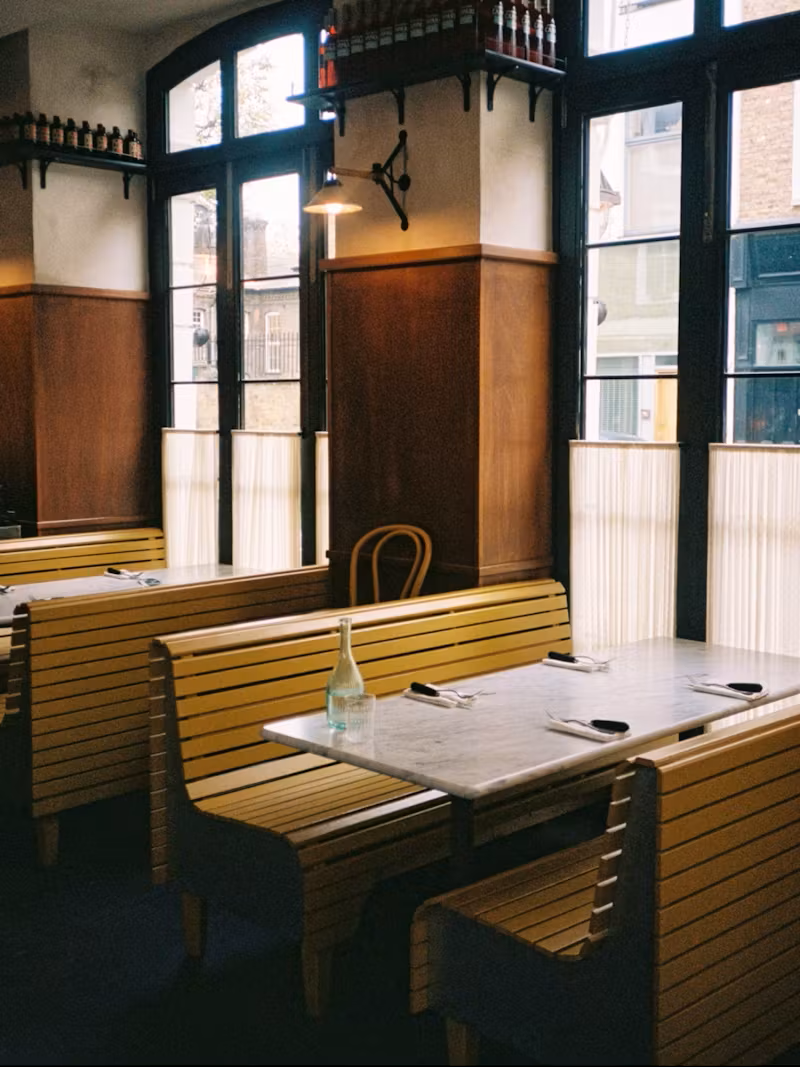
Canteen
The newest name on everyone’s lips just happens to be the hardest reservation to get - mostly because they don’t take them. Canteen sits pretty on the corner of Golborne and Portobello, slinging wood-fired pizzas to a crowd that’s part fashion week, part neighborhood cool. It’s buzzy without announcing it, with a steady stream of celebrity sightings and the kind of energy that makes you want to stay for just one more. Come hungry, stay for the stories.
Cheers
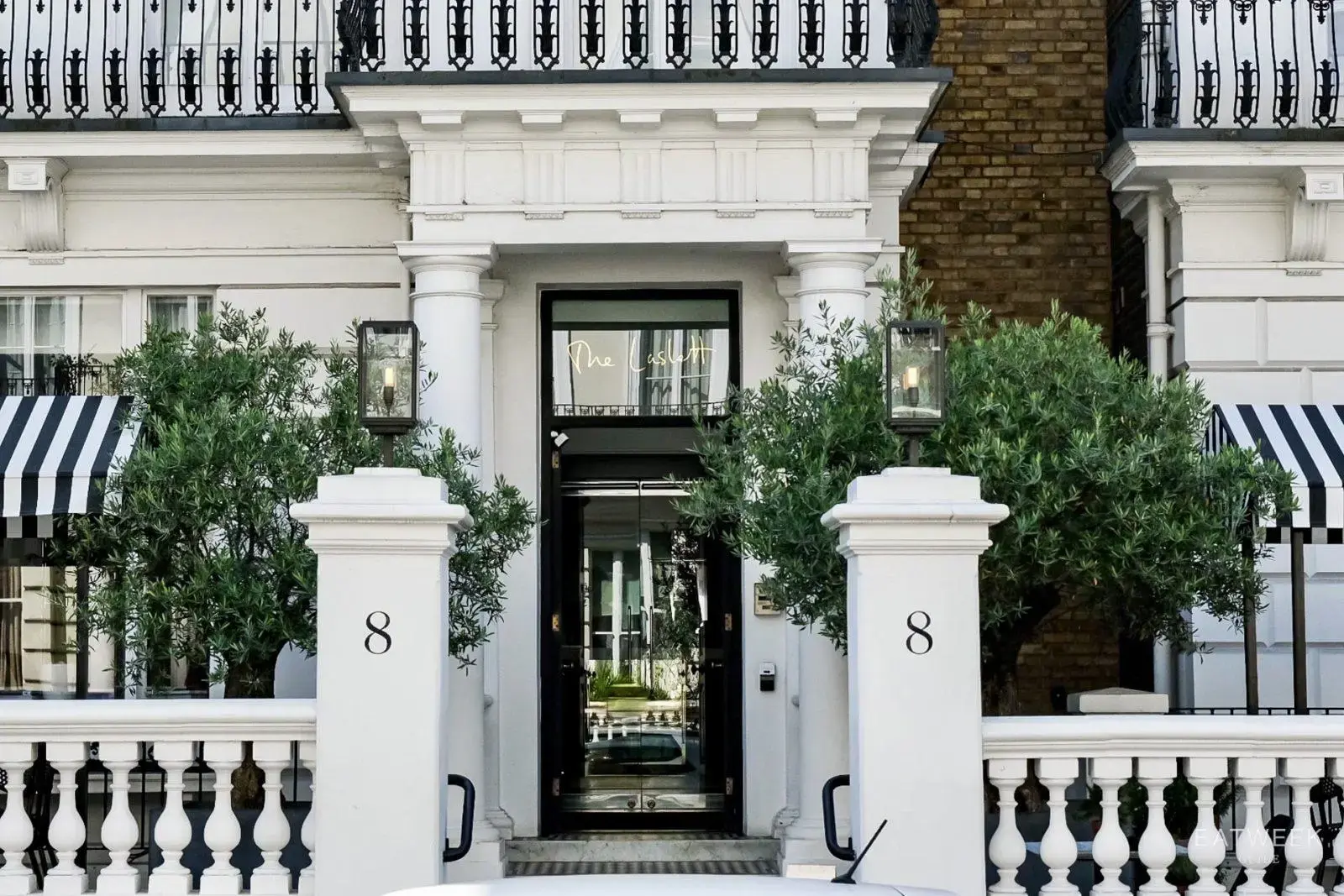
The Laslett
Steps from Notting Hill Gate station but worlds away from the underground chaos, The Laslett is a hidden-in-plain-sight gem. While technically part of a boutique hotel, it feels more like a well-kept local secret. The front garden is ideal for balmy evenings - leafy, serene, and effortlessly dreamy. Inside, The Henderson Bar doubles as a living room-meets-art gallery, with curated pieces, low lighting, and a cocktail list that leans classic but with a twist. Come for a quiet drink, stay for the fashion-forward vibes and creative hideaway feels.
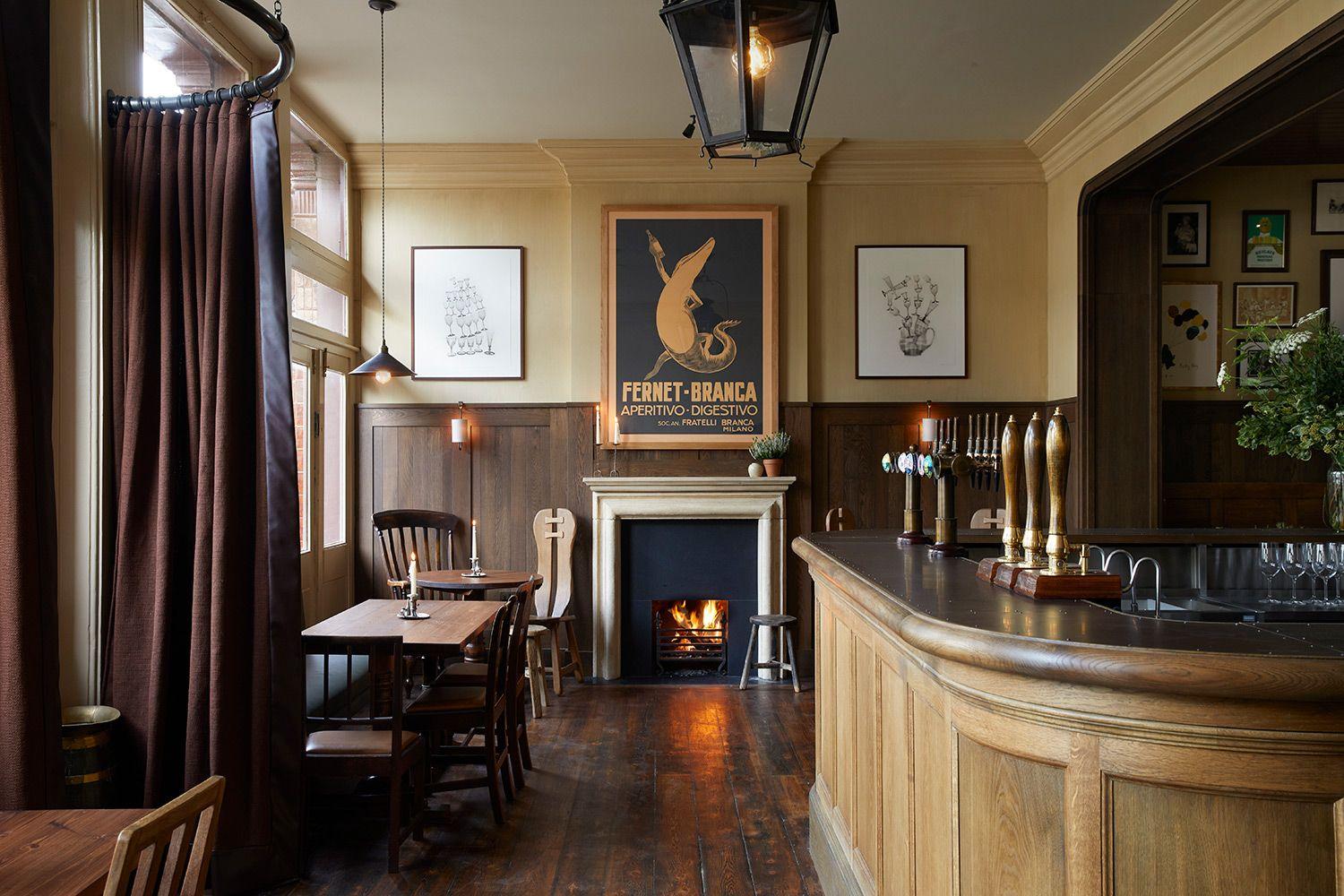
Walmer Castle
Fresh from a stylish revamp, Walmer Castle feels less like your average pub and more like your wealthy aunt’s eclectic townhouse - the one with a flair for moody lighting and a well-stocked bar. Inside, it’s all plush velvet, mismatched antiques, and fireside corners made for candlelit chats with a Walmer Picante in hand. Equal parts historic and contemporary, it’s the kind of place where one drink turns into three, and no one’s watching the clock.
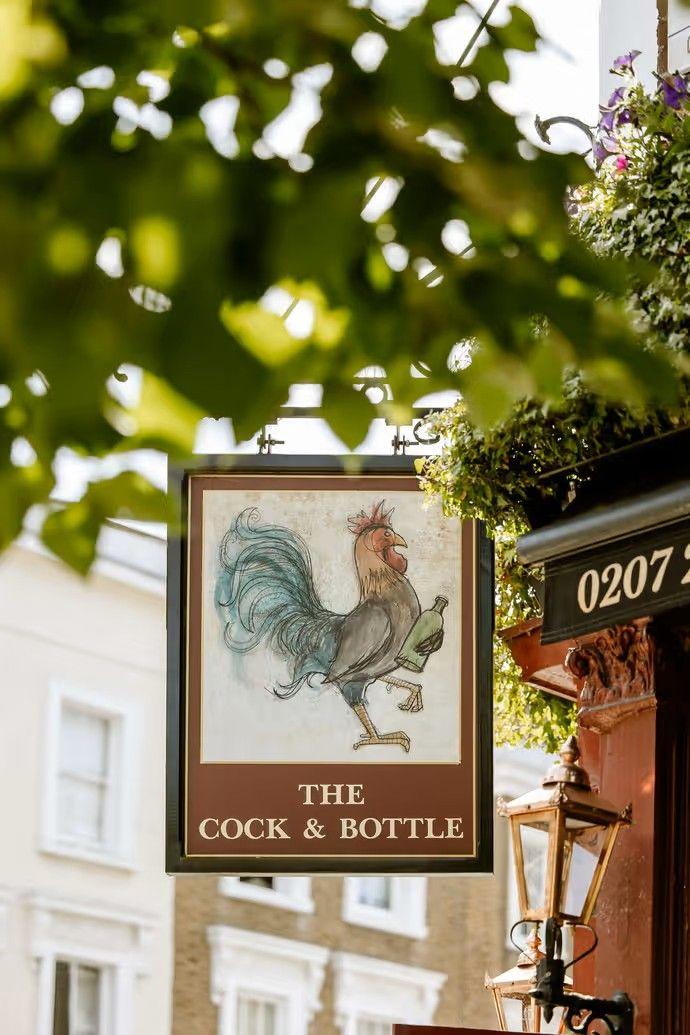
Cock & Bottle
Before you’ve even stepped inside, the wraparound terrace at the Cock & Bottle draws you in - usually by way of a cheer from the football crowd or the clink of pints in the sun. Equal parts raucous and endearing, this corner pub is a true local’s haunt, where the laughter is loud, the conversation easy, and the quiz nights veer into unexpectedly cutthroat territory. Inside, it’s all classic pub warmth: worn wood, low ceilings, and that golden-hour glow that makes everyone look a little rosier. The pints are properly poured, the banter flows freely, and if you come with friends, you’re likely to leave with a few more (barring any quiz-night grudges).
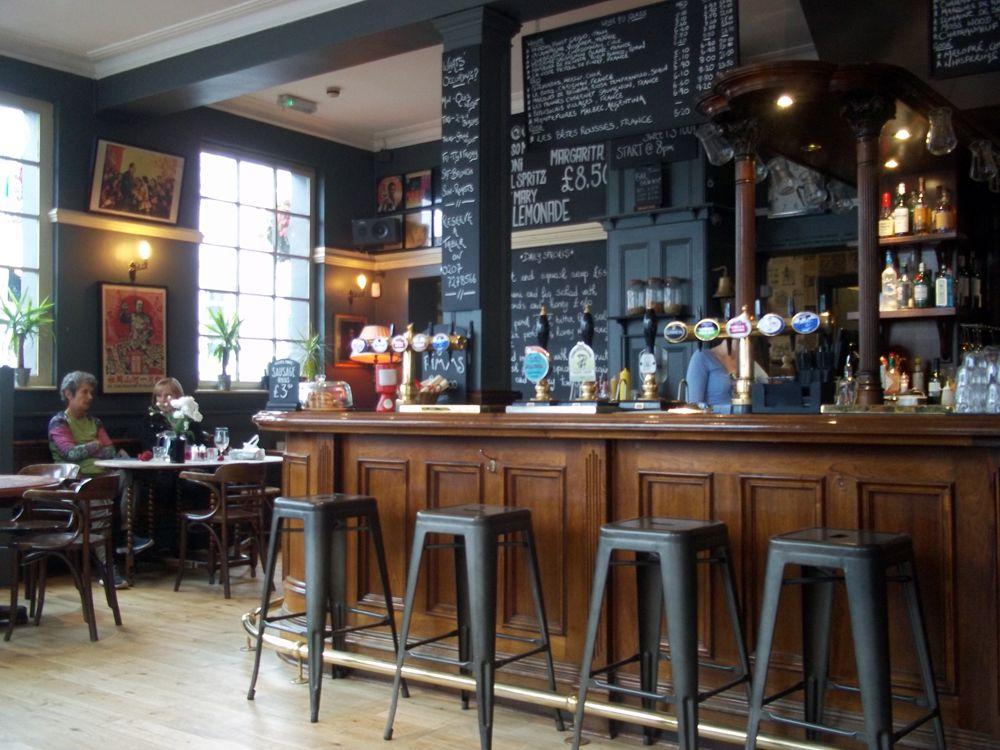
The Hillgate
There are pubs you pop into - and then there are pubs you stay for. The Hillgate is decidedly the latter. Flanking a quiet Notting Hill corner, it’s everything a neighborhood pub should be: Welcoming, unpretentious, and perfectly poised for a night of imbibing your favorite lager. The wine list is thoughtfully curated and on warm days, the energy spills onto the street in that effortless West London way. Sundays are sacred here - the roast is reason enough to plan your weekend around it.
Retail Moment
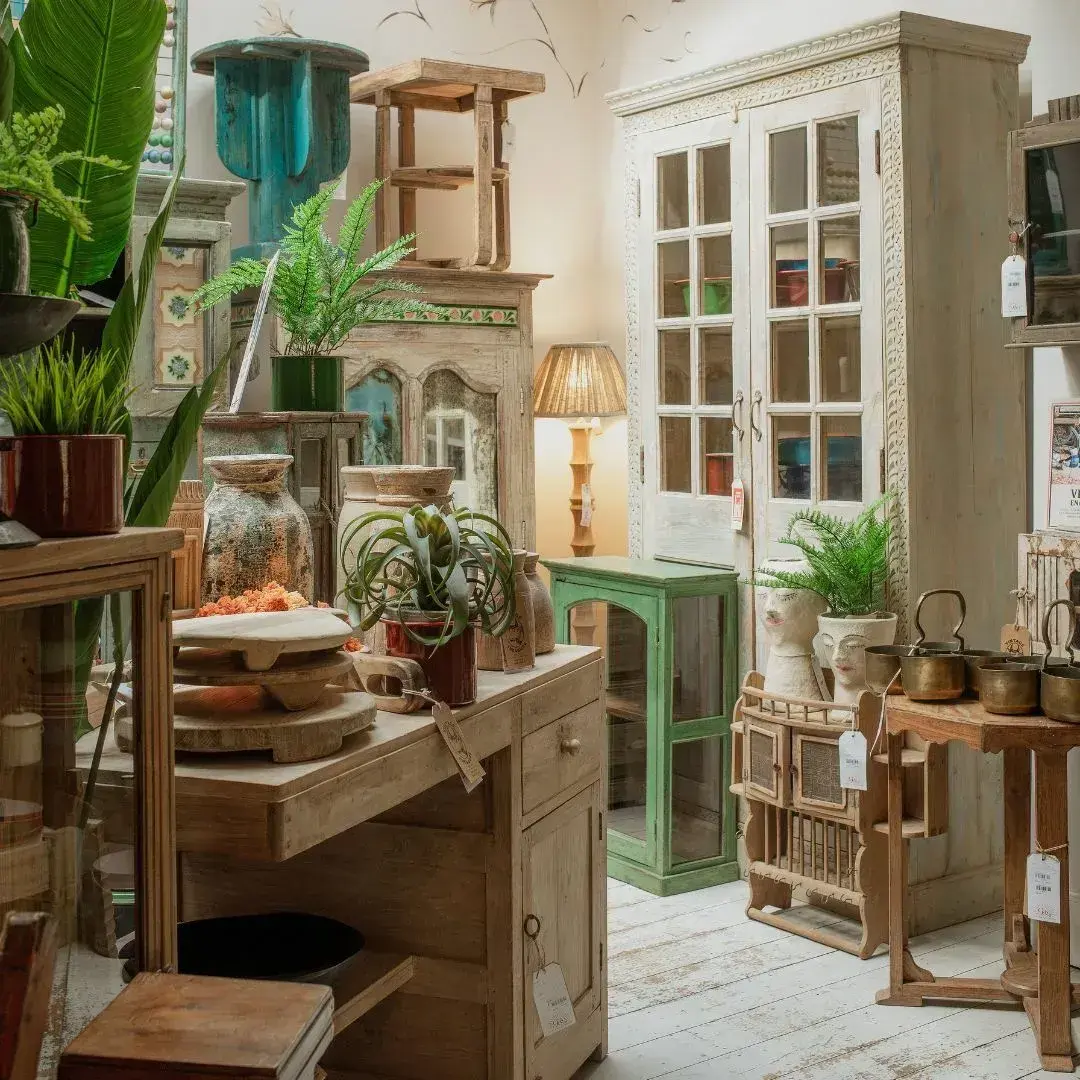
Graham & Green
A longtime Notting Hill favourite, Graham & Green is a treasure trove in the truest sense. The go-to haunt is perfect for stylish hostess gifts, whimsical homeware, and those small-but-perfect finds that instantly elevate a shelf, side table, or surprise at a supper party. Every corner is layered with personality, from jewel-toned glassware to hand-painted trays and charming objects that feel lovingly unearthed rather than mass-produced. Don’t skip the downstairs level - it’s a trove within a trove, brimming with fringed lampshades, patterned pillows, and custom curtains, all laced with the kind of eclectic British charm the brand has quietly mastered.
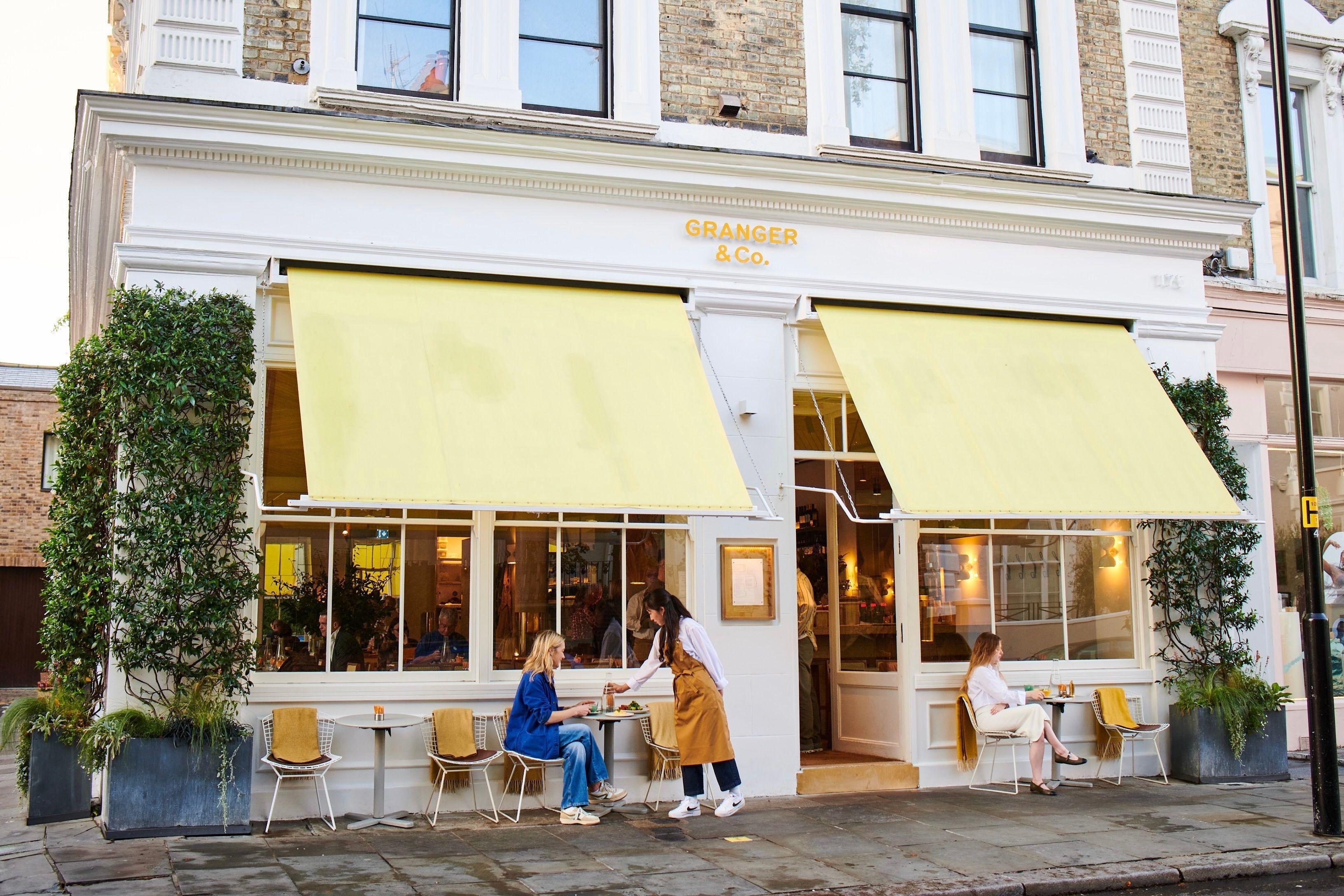
Westbourne Grove
If Portobello is Notting Hill in its bohemian weekend best, Westbourne Grove is where the neighbourhood goes to play dress up. This elegant stretch is lined with fashion, florals, and the kind of lifestyle storefronts that make a morning wander feel like a moodboard in motion. Begin with a flat white at Daylesford, where the coffee is as considered as the curation, then ease into a retail stroll with serious style credentials. LoveShackFancy brings its signature romantic frills, while Reformation offers up eco-minded silhouettes with downtown edge. At Wrap, you’ll find a thoughtful edit of elevated essentials, and Soho Home delivers interior inspiration with that members-club gloss. Further down, Sézane draws a loyal crowd for its effortless Parisian polish, and Aesop, as ever, lures you in with scent alone.
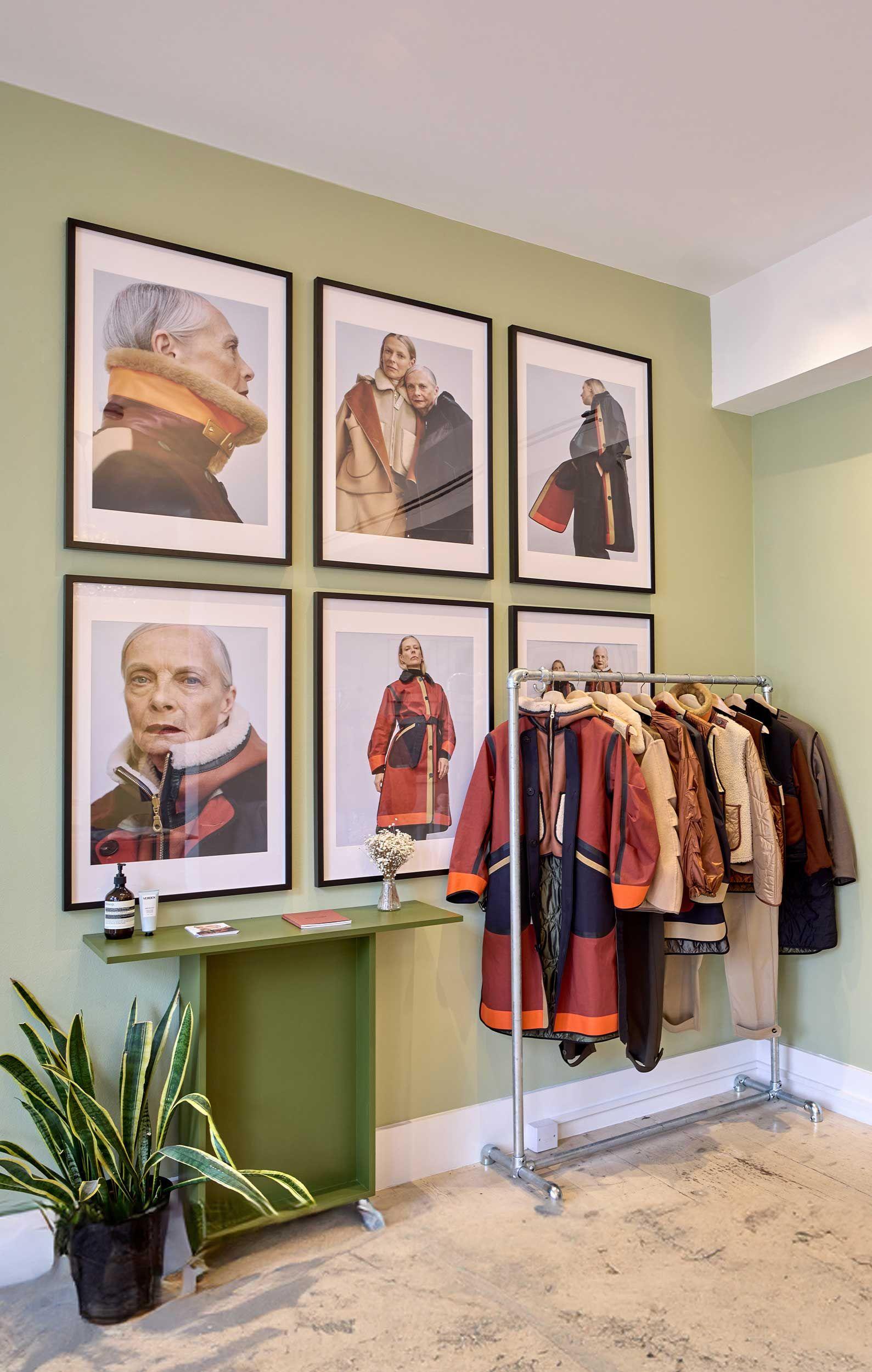
Marfa Stance
In a city where the weather changes hourly, a great jacket is a prerequisite for Londoners. Marfa stance has turned that necessity into an art form, building a brand around outerwear that’s as functional as it is fashion-forward. Their signature pieces are modular by design: Reversible, customisable, and sustainably made, each one accompanied by a digital product passport that charts its thoughtful creation. Set on Ledbury Street, the flagship shop feels more like a style studio than a storefront. Try one on and you’ll understand the cult following - it’s outerwear that adapts to you, not the other way around. Warmer, chicer, and built to last.
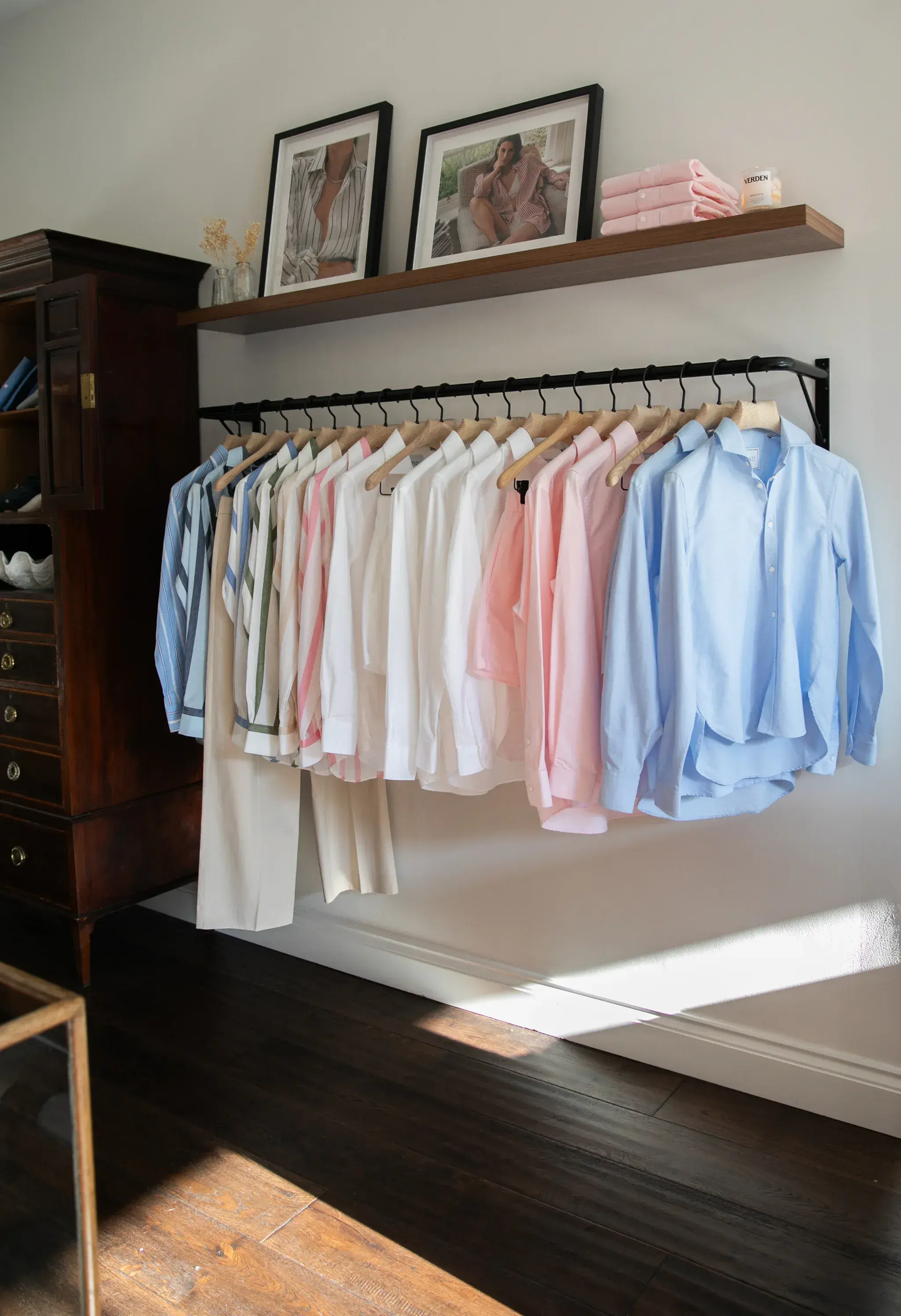
Tailor Made
If a perfectly tailored button-down is your love language, WNU speaks it fluently. Their Notting Hill boutique feels like stepping into a modern-day haberdashery with its clean lines and aesthetically pleasing built-in shelves holding rows of crisp shirts in every shade and stripe. The collection is effortlessly cool and endlessly wearable, it’s nearly impossible to leave without something from the curated shop. Once owned, you’ll be reaching for these staples again and again.
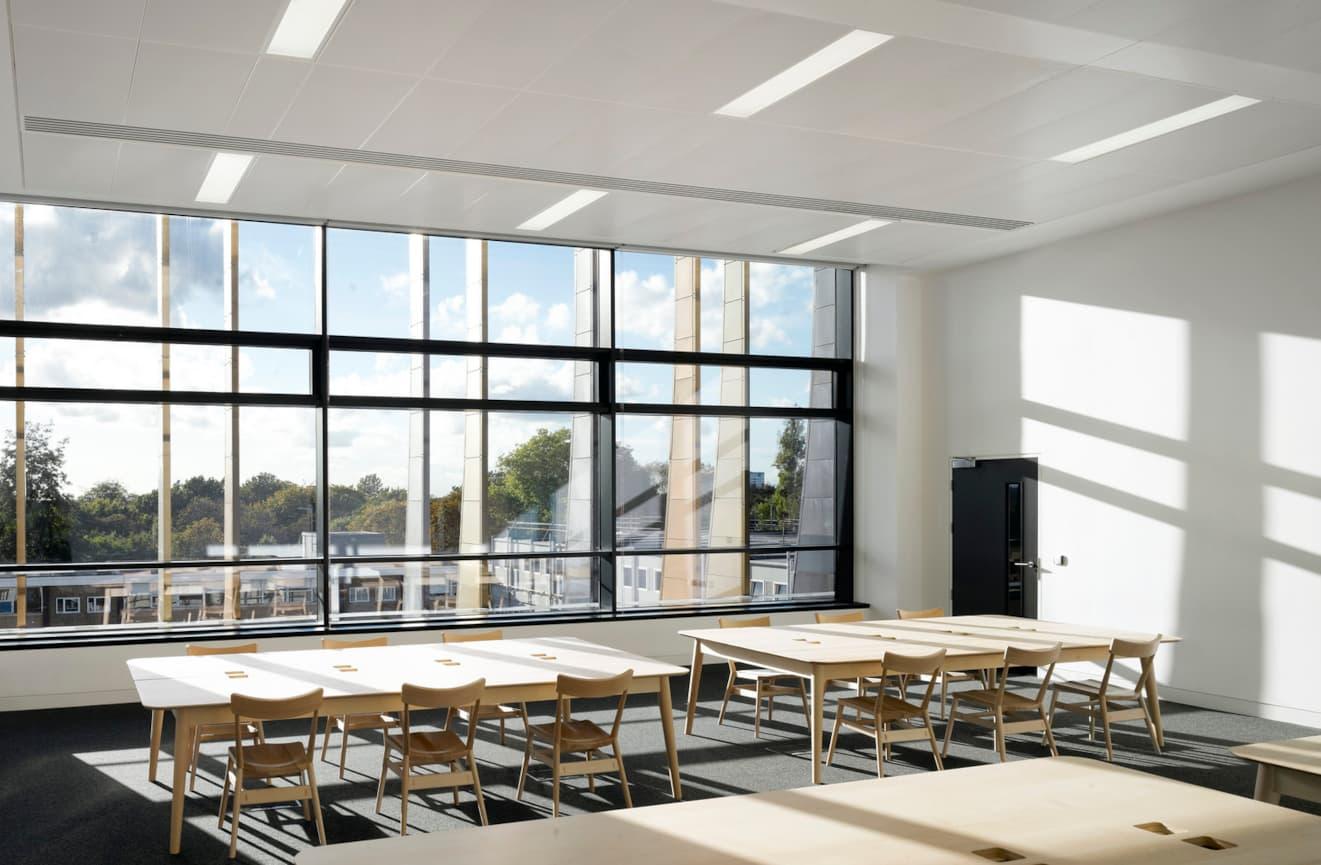
Schools & Eductation
Primary Schools
- Thomas Jones Primary School
- Colville Primary School
- Avondale Park Primary School
- St Clement & St James Primary School
Private / Independent Primary Schools
- Chepstow House School (Co-ed)
- Norland Place School (Boys)
- Pembridge Hall School (Girls)
- Wetherby School (Boys)
Secondary Schools
- Kensington Aldridge Academy
- All Saints Catholic College
- Holland Park School
Private Secondary Schools
- Notting Hill & Ealing High School (Girls)
- Cardinal Vaughan Memorial School (Boys)
Your Local Advisors
